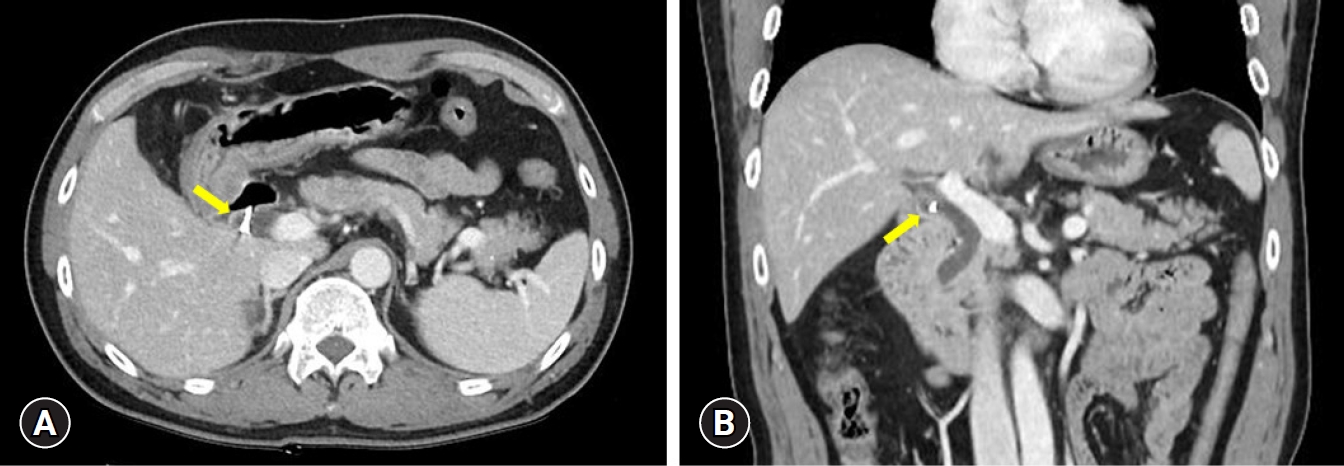A 51-year-old man was referred to our institution because of a subepithelial tumor (SET) of the duodenum, which was detected incidentally during esophagogastroduodenoscopy (EGD). Twenty years earlier, he had undergone a cholecystectomy because of cholelithiasis. During EGD, an SET-like lesion, covered by normal duodenal mucosa, was observed in the anterior wall of the duodenal bulb (Fig. 1A). Endoscopic ultrasonography (EUS) using a 20-MHz catheter probe (UM3D-DP20-25R; Olympus) revealed a 0.8├Ś0.6 cm-sized anechoic lesion with hyperechoic suture material outside the duodenal wall (Fig. 1B, C), which was connected to the common bile duct. No Doppler flow was detected by 7.5-MHz conventional EUS using a radial echoendoscope (GF-UE260-AL5; Olympus) (Fig. 1D, Video 1). Abdominal computed tomography scans also showed a remnant cystic duct with suture material (Fig. 2). Therefore, the lesion was diagnosed as a duodenal SET-like lesion caused by a remnant cystic duct.
A remnant cystic duct occurring after cholecystectomy can cause an SET-like lesion in the duodenum, particularly when the SET-like lesion is in the anterior side of the duodenal bulb in patients with a history of cholecystectomy. Although it is very rare, adenocarcinoma can arise from such a remnant cystic duct.1 Detailed examination of a remnant cystic duct by EUS is necessary to avoid missing malignant tumors or stones in the remnant duct.2,3









